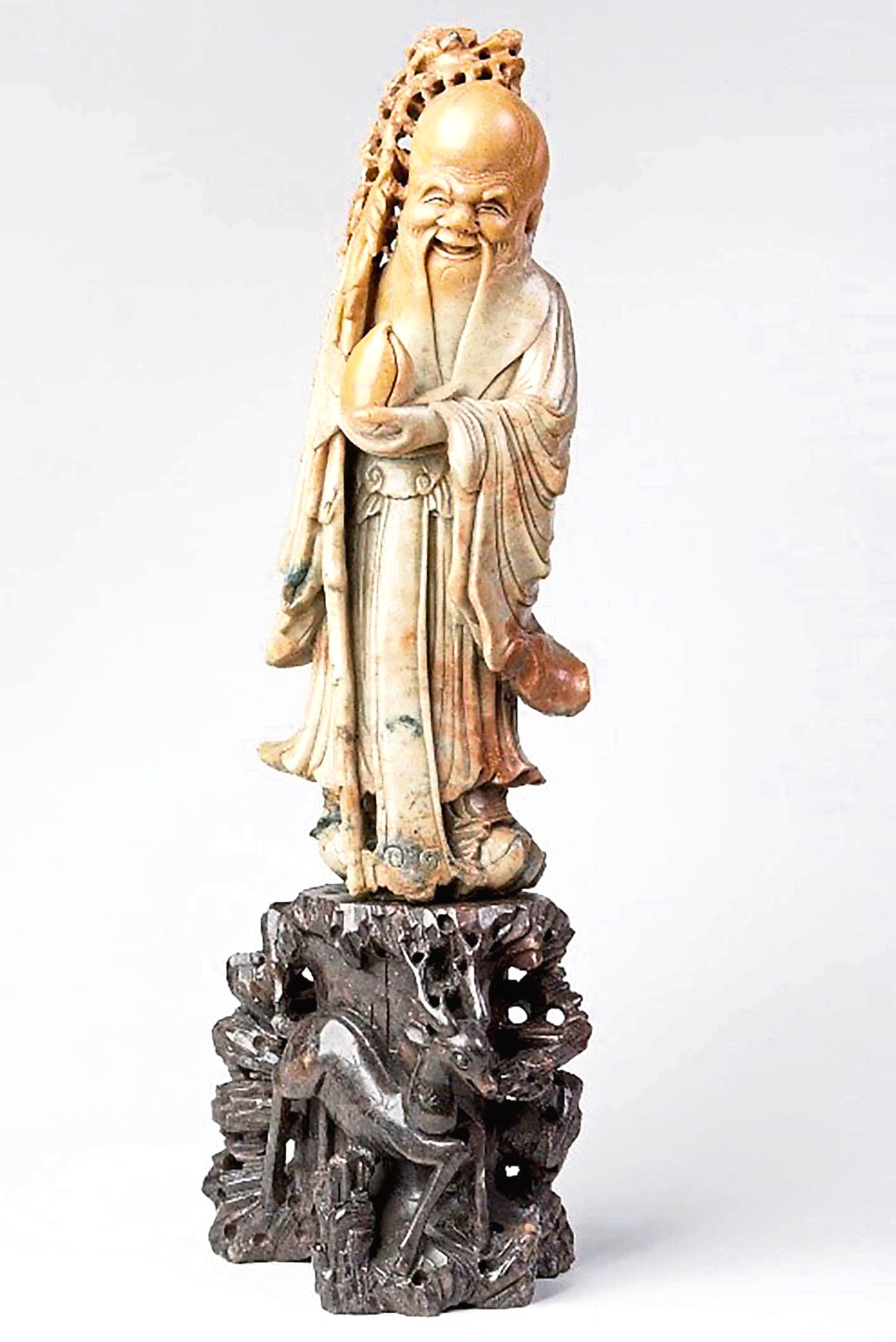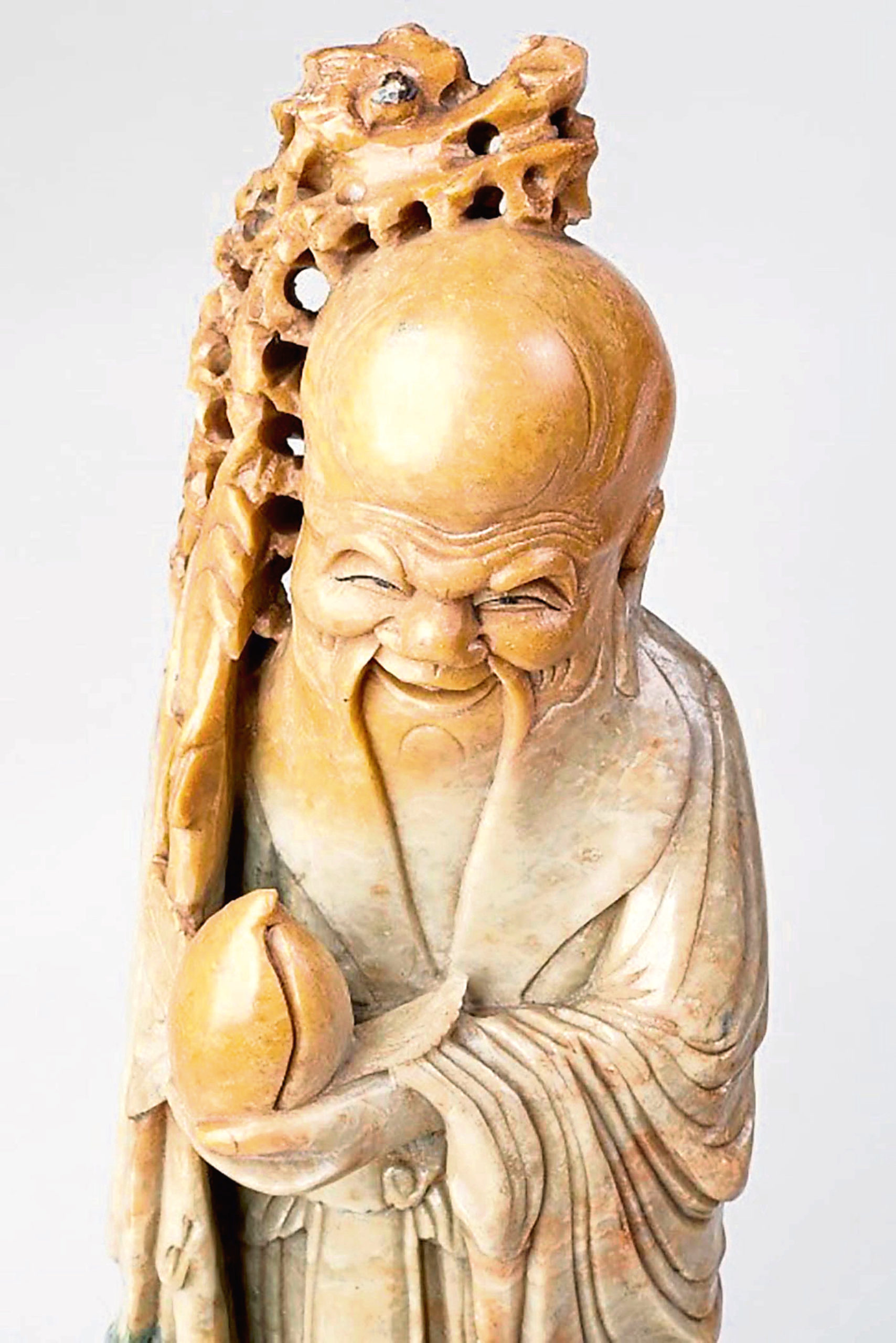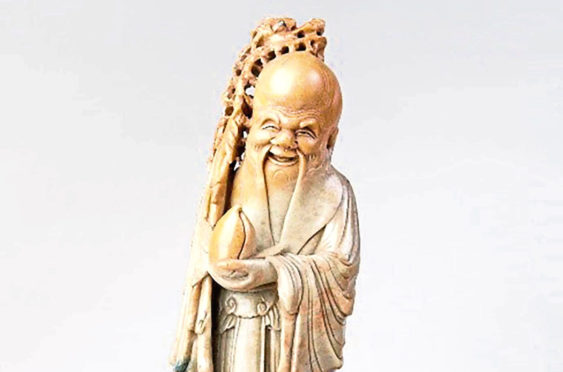This carved ivory statue with a wood base depicts Shou-Lao, a prominent character in Asian art and mythology.
This piece became part of Aberdeen City’s collection when it was gifted by James Cromar Watt’s estate when he died in 1940. Watt was a prominent architect, artist, and jeweller in Aberdeen in the late 1800s and early 1900s. He collected antique ceramics and precious metal artefacts from China and East Asia.

Shou-Lao, also known as Shou-xing or “The Old Man of the South Pole”, was the Ancient Chinese and East Asian Taoist exemplar of wisdom and longevity.
Taoism is a religion that dates to the 300s in China, but potentially has ancient roots and wider influence. It focuses on living as one with the Tao or “the way”, the unplanned rhythms of the universe. He is easily identified by his large brow –indicating wisdom – a staff, a deer, and a peach, itself a symbol of immortality.
He is named for Shou, the brightest star in the Carina constellation and the star of the south pole in Chinese astrology. The south pole was believed to control the mortal life spans.

As he is a prolific character in East Asia, there are many different stories about Shou-Lao. One story describes that he was carried in his mother’s womb for 10 years and was already an old, wise man when born. Another story tells that he was called Zhao Yen as a child.
It was predicted that he would die at the age of 19. He was sent with meat and wine to a field where two men play checkers under a tree. He was told to give these men the food and drink, but not to answer their questions.
The two men were the north and south pole, who decide peoples’ birth and death. In thanks for their meal, the south pole agrees to change the figures of Zhao Yen’s dying age from 19 to 91, giving him a long life. In wider mythologies of East Asia, he represents the Taoist focus on the ethics and philosophy for living in accordance with the way.
We wish all our readers long life, health and happiness in the New Year.
